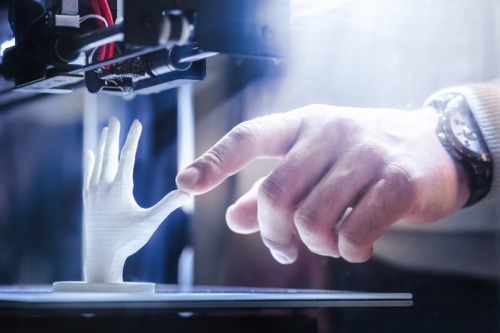
How to Choose Between 3D Printing Processes?
24 January 2020

There has never been a better time for companies to look into the 3D printing market. 3D printers are more affordable than ever before, and there are plenty of resources available for training workers to use these systems. However, there are several competing standards and methods for creating 3D printed items. The adoption of the tech requires picking one of these standards.
The three most common methods in the current 3D printing market are Fused Deposition Modeling (FDM), Selective Laser Sintering (SLS), and Stereolithography (SLA). Let's take a brief look at the major differences between these standards.
Fusion Deposition Modeling
FDM is the method of 3D printing most commonly seen in the home, hobbyist, and small business markets. It involves melting and extruding a thermoplastic filament with a nozzle depositing the plastic layer by layer to build up the final object.
FDM printers are the most inexpensive to own and operate, with both the machines and the thermoplastic being cheap to obtain. However, they also have the lowest printing resolution, as well as the lowest level of accuracy. So, they are best used for simple jobs such as rough proof-of-concept prototyping. They rarely produce parts that would be fit for active use.
Selective Laser Sintering
SLS is the method most commonly seen in the industrial sector. SLS uses a polymer powder, which is then heated and fused with a high-powered laser. One major benefit to SLS systems is that the powder itself acts as a support system while the object is being built. Unlike FDM, there's no need to build a support structure that has to be later cut away.
In addition, the resulting pieces have excellent material properties and can be quite reliable. SLS systems produce working prototype parts and can also be utilized for custom part production.
Stereolithography
SLA is the oldest 3D printing technology, but still one of the most reliable and widely used. It starts with a photoreactive resin, which is cured with a high-powered laser. SLA has the highest resolution and the highest accuracy of all 3D printing methods, along with producing the smoothest and most finished parts. It's flexible and adaptable to a wide variety of applications.
The primary drawback is cost. Both the machines and the resin are expensive, but high-quality results often justify the price.
Visiongain has the business intelligence you need! We have over 1,500 reports across 18 verticals available for viewing or purchase. Contact our team today.
Recent News
How to Choose Between 3D Printing Processes?
There has never been a better time for companies to look into the 3D printing market. 3D printers are more affordable than ever before, and there are plenty of resources available for training workers to use these systems. However, there are several competing standards and methods for creating 3D printed items. The adoption of the tech requires picking one of …
24 January 2020
Read
Overcoming Challenges Within The 3D Printing Market
The 3D printing market has been expanding drastically over recent years, with a CAGR of over 25% that’s expected to remain steady for years to come. Businesses are discovering a wide variety of uses for 3D printing, for everything from prototyping to producing spare parts for their own machinery. Not every business needs a 3D printing setup, but an ever-growing …
03 January 2020
Read
“The global 3D printing ceramics market is anticipated to surpass USD 390 million by 2030”,says Visiongain
The 3D ceramic printing industry is in its initial stage of growth and faces many challenges.
20 December 2019
Read
Why is 3D Printing in the Healthcare Industry Set to Grow Hugely in the Near Future?
The 3D printing market certainly shows no signs of slowing. It seems nearly every day new technology is introduced that enables everyone from medical professionals to manufacturers to take advantage of the process. However, the healthcare industry, in particular, is poised to provide some great cutting edge advances from this innovative technology in the years ahead. As one of the …
















